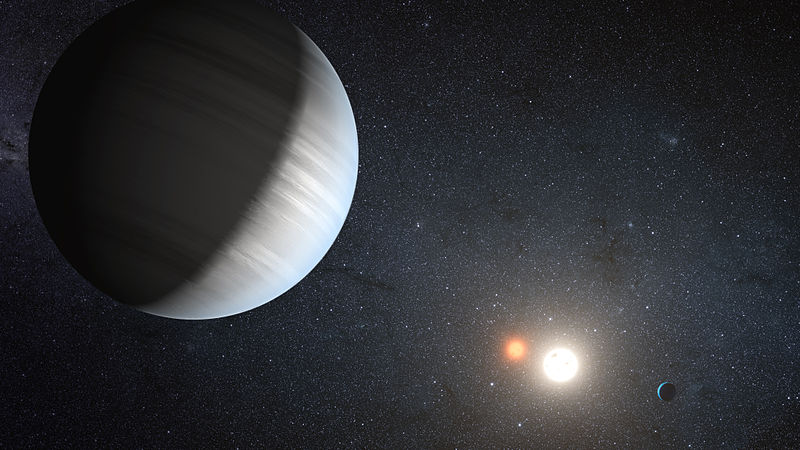New Space Mystery Could Mean the Discovery of an Alien Megastructure
There’s a new mystery in space and it’s opening the possibility that mankind may have just stumbled upon an evidence of an alien megastructure. It’s something unusual astronomers were able to observe over years and is indicative of monumental space discovery, literally and figuratively speaking.
KIC 8462852
This space mystery has been given the name KIC 8462852. It is a star twice the size of the sun with something unusual going on with it. It is around 1,500 light years away from Earth. What makes it mysterious is the unusual pattern of dimming observed in it. This unusual dimming was captured by the Kepler space telescope of NASA, the so called . Kepler first discovered KIC 8462852 in 2009. Astronomers have not seen such a pattern before and are puzzled by what is causing it.
Unusual Dimming
Usually, dimming is induced by planets and other celestial that are blocking the stars. These celestial bodies may cause a star’s luminance to drop by around 1% to 2%. In the case of KIC 8462852, it dims by up to 20%. After observing this star, at around the 800-day mark, astronomers observed that its brightness dropped significantly, by around 15%. More than four years into the observation, this star was seen dimming by about 20%. For a star to temporarily lose luminance by this much, something around half its diameter should be blocking it. This would seem unnatural considering that Jupiter, the biggest planet in the solar system, is only around a tenth of the size of the sun.
Unusual Light Pattern
Aside from the unusual dimming, astronomers have also observed an unusual light pattern coming from KIC 8462852. This unusual pattern of light is suggestive of a humongous object circling the star. In an interview with USA Today, Yale postdoctoral fellow (astronomy) Tabetha Boyajian said that this would be typical for a young star but not for a star as old as KIC 8462852. This star was already flagged as “interesting” by members of the astronomy group Planet Hunters. Now, this interesting star is stirring some interesting and exciting debate among astronomers.
Possible Reasons of The Unusual Dimming and Light Pattern
Boyajian, in collaboration with other astronomers, published a paper on this matter. Accordingly, the most likely reason for this unusual dimming and light pattern is the disintegration of a comet around the star. As the ice and dust components of the comet broke down, they may have spread around and temporarily blocked out the light from KIC 8462852. This theory has a flaw, though. Normally, when comets break down, they produce an excess of infrared radiation. This radiation should have been easily detected by Kepler or even observed from Earth. Kepler, so far, has not detected infrared signals that can be associated with the possible object that blocks the light from KIC 8462852.
Another possible reason being considered is that there’s a star that passed through KIC 8462852. This may have brought along a clump of comets that may have resulted in the strange light pattern. However, Boyajian admits that there is still difficulty in explaining the data they have in hand. Again, there ought to be infrared detected if this were the case since anything that is being heated (the object that blocks the light from KIC 8462852) is bound to get hot and eventually release infrared signals. However, there’s none.
The Alien Megastructure Theory – This is why the alien megastructure theory is being considered. While the researchers made sure that their focus is on natural explanations, the alien theory cannot be quickly ignored. Boyajian said that she presented the unusual light pattern of KIC 8462852 to Penn State University astronomer Jason Wright, who suggested that they collaborate with Andrew Siemion, University of California – Berkeley’s Director of the Search for Extra-Terrestrial Intelligence (SETI).
In an interview with The Guardian, Wright said that aliens should always be the last hypothesis to consider but “this looked like something you would expect an alien civilization to build.” Wright has been investigating the possibility of what alien constructions in space would look like. He explains that if this alien megastructure theory is correct, such a megastructure would have to be immensely huge to be able to significantly block the light of a star.
For now, there is no certainty as to what is really causing this relatively new space mystery. However, Boyajian, Wright, and Siemion have already submitted a proposal for further studies on the subject matter. They are requesting for a missive radio dish to be aimed at KIC 8462852 so they can study of the wavelengths of the light and determine if there is any that could possibly come from a technological source. If the proposal gets approved, the trio hopes to start their observation in January next year.

